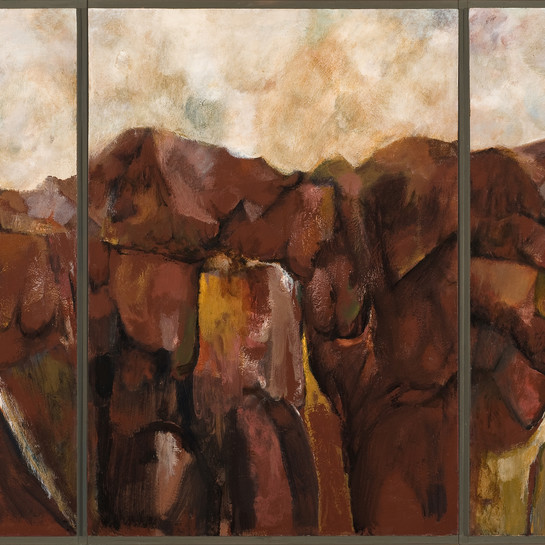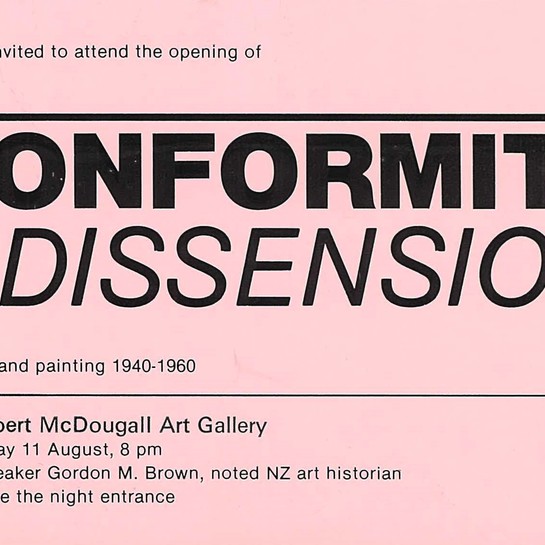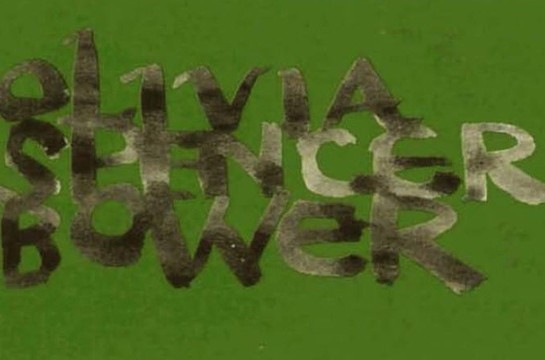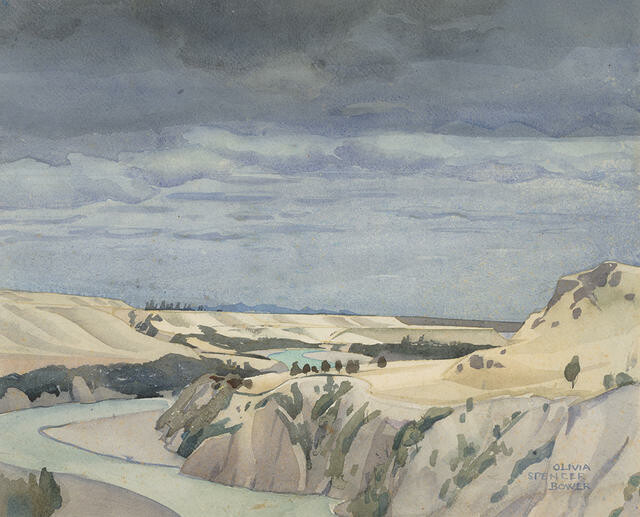Olivia Spencer Bower
England / Aotearoa New Zealand, b.1905, d.1982
Bleached Terraces
- c. 1951
- Watercolour
- Harry Courtney Archer estate, 2002
- 460 x 550 x 30mm
- 2003/07
- View on google maps
Tags: clouds, gorges (landforms), gray (color), landscapes (representations), mountains, natural landscapes, rivers, terraces (landscaped-site elements), trees
The Waimakariri area was of particular significance to Olivia Spencer Bower. Her grandparents Marmaduke Dixon and Eliza Wood left England to run a sheep station near the Waimakariri River. By 1928, Spencer Bower’s twin brother, Marmaduke, had taken over the station. Spencer Bower explored many terraces – Mount Torlesse, where she had lived a while with her aunt and uncle, the nearby Castle Hill terraces, and these terraces at the Waimakariri River.
By the 1950s, Spencer Bower had a reputation for using a limited palette and light application of pigment; the clouds in Bleached Terraces demonstrate this, using darker tones in the foreground and lighter tones in the background to give a sense of space and perspective. This work positions the artist in the land looking out along it to the distance, in contrast with some earlier work where her interest was in ‘looking down’.
(He Rau Maharataka Whenua: A Memory of Land, 17 September 2016 – 18 February 2017)
Exhibition History
Canterbury’s Waimakariri River and its environs was one of Spencer Bower’s most favoured landscapes, which she painted regularly throughout her career. In this work she captures the effects of the dry, bleached grass on the terraces of the river. Spencer Bower worked predominantly in water-colour, a medium with which she was very skilled, often painting plein air (outdoors) directly before the subject. Born in England, Spencer Bower was the daughter of the British artist Rosa Spencer Bower. The family emigrated to New Zealand in 1920. Olivia studied at the Canterbury College School of Art and, in 1929, at the Slade in London. After returning to New Zealand in 1931 she devoted her life to painting. The foundation she established in her later years finances an annual scholarship that enables an artist to work full-time for one year. (Label date unknown)



